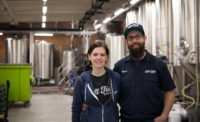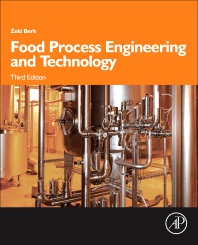Special Supplement: Site Selection
Setting your sites on solid ground
A litany of factors must be considered in selecting a new plant location, but the choice must ultimately facilitate your goals and business strategy.

Wisconsin Lt. Governor Rebecca Kleefisch announces the North Mendota Energy and Technology Park in Westport, WI as the latest of the 15 “Certified in Wisconsin” sites. Source: WEDC.

The Austin Company identified this location as the most desirable for a bakery production facility based on transportation models, the availability of suitable sites and labor, and other factors. Source: The Austin Company.

Certified by The Austin Company as development-ready, this site was part of a statewide economic development program. Each community and site owner agreed to perform the necessary due diligence for certification. Source: The Austin Company.

Japan-based Kikkoman Corp. selected Walworth, WI as the site for its North American headquarters, because it is centrally located, enabling efficient distribution. Source: WEDC.




Whether a processor is moving on, moving up or moving out, choosing a new home for a plant must involve the consideration of several factors, such as utilities and water costs, access to transportation, labor availability, incentives and sustainability issues. Plus, the location must fulfill the goals of the processor. To begin this process, Sarah Torres, senior economic analyst for Burns & McDonnell, says a processor should first understand its current business operations and identify key criteria for the new location.
Article Index:
- Plan ahead
- Evaluating the environment
- Incentives: Do your homework
- Workforce, culture and sustainability
“Selecting a site boils down to locating a facility where the company can perform a service or manufacture a product better than it will be able to anywhere else,” adds Tom Stringer, national site selection and business incentive practice leader for BDO USA Consulting. “The site selection process begins with identifying which factors are important and ranking them in relation to one another.” In short, knowing what the facility’s main functions are, whom it will serve, and how it will process and deliver its products will essentially dictate where it should be located.
Plan ahead
When starting a search for the best location, it seems logical to begin with evaluating various sites. However, site selection consultants say the best way to kick off an assessment is actually to begin with the design of the process facility itself.
“The site selection process can’t really begin without a preliminary design concept, which can be customized and altered to fit the available land, assuming other key factors are met,” says Stringer. He explains outlining the placement of entrances and exits; directing truck flow; and knowing how the infrastructure will be laid out are important considerations. However, the building concept should go beyond the designer’s rendering.
“It [the building concept] should include things like line layouts and process engineering,” according to Stringer. “Knowing what should be built and then finding land that accommodates these requirements will yield the desired efficiencies and production better than designing around the land.”
Frank Spano, managing director of The Austin Company, suggests a number of building specifications should be determined, such as the proposed size and height, as well as the space needed for the entire process, including manufacturing, warehousing, freezing/cooling and office space. The company should also have a good idea of how much land it currently needs, in addition to what might be required in the future.
“A vision of the ultimate end objective of any expansion or new project should be discussed to determine if the property and available infrastructure are compatible with the long-term view,” says Bill Sander, senior vice present and project manager for Hixson Architecture and Engineering.
This long-term view must also take into consideration the company’s financial outlook, including short- and long-term growth projections. Todd Heine, principal of corporate food services for Avison Young, believes processors must keep in mind any pending mergers or acquisitions that could affect the new facility’s size and scope.
“Efficient planning also requires technical considerations,” he says. “For instance, refrigeration and cooling systems should be located in an area with adequate room for future expansion.” Otherwise, the systems could become obsolete over time.
A good rule of thumb to use when securing a site or an existing building is to consider plans for future growth within a five- to 10-year timeframe, says Spano. This preparation will help determine whether the intended site will accommodate projected growth and could justify purchasing more adjacent acreage than presently needed.
Evaluating the environment
Once the initial design concept has been completed, the characteristics of potential locations can be considered. Among the most important of these factors are access to transportation and the site’s location in relation to major roads. “For ease of product movement in and out of the facility, food and beverage processors should locate in close proximity to either interstate or major four-lane highways,” states Spano.
Of course, this is especially true for companies producing time-sensitive foods, such as bakeries and fresh/perishable operations. Locating closer to major roads and/or having rail access also cuts down on fuel costs, a critical factor in times of high fuel prices.
Spano says more food processors are considering locations where raw materials can be purchased within an approximate 200 mile radius. In addition, they are working with the local agricultural community to establish contracts with farmers, enabling them to purchase products directly.
Having access to raw ingredients from dependable suppliers and using a reliable transportation infrastructure ensures end-products will reach their market with maximum efficiency, says Wade Goodsell, business attraction account manager for the Wisconsin Economic Development Corporation (WEDC). Also increasingly crucial is having access to a reliable source of water.
“Recognizing the rising importance of the ‘blue economy’ in both economic development and business model sustainability, Wisconsin has invested heavily in the development of new water technologies with the establishment of the Global Water Center in Milwaukee, dedicated to water research and water industry development,” explains Goodsell.
Site selection consultants agree the accessibility and quality of water are crucial to a location, and processors that need large amounts of water should look into drought conditions and local restrictions on consumption. While it might be difficult to predict a water shortage, doing a little digging into historical water shortages in a certain community could pay off. Spano suggests looking for any water shortages in the past five to 10 years that have involved curtailing service to industrial customers.
Also, processors should determine where local water sources originate, such as well water versus surface water. Then, they should identify any potential water improvements being planned to the system in the next two to five years and find out if those costs will be passed on to ultimate users.
For example, Bill Sander recalls when Hixson was evaluating a site for one client, only to discover the local municipality was on the verge of running out of wastewater treatment capacity. “Had the processor gone forward with that site, it may have been saddled with the burden of building its own wastewater treatment plant,” he says.
When considering a site’s potential costs, utilities, of course, are top of mind. All site selection consultants—and economic development organizations—stress this is a critical component for processors. “Depending on usage, the cost of utilities can make up a significant chunk of a company’s budget,” notes Gary Thompson, executive vice president of the Regional Growth Partnership, a nonprofit economic development organization representing 20 counties in northwest Ohio and southeast Michigan.
First, processors must understand their consumption of electric power, natural gas, water and wastewater on a monthly basis. Austin’s Spano suggests submitting this information to the local utility provider to secure an estimated monthly or annual bill, which will help determine the operating costs.
“In addition to annual costs, pay special attention to ‘one-time’ or ‘startup’ utility costs for water and wastewater use,” he cautions. “Frequently, communities will levy an impact or connection fee based on water and wastewater usage and effluents that are often by-products in a food processing operation. These can be quite substantial and should be reviewed based on a company’s usage before any location decision is made.”
Incentives: Do your homework
For decades, state and local governments have been dangling enticing incentives for big companies to locate in their territories. Communities understand the value of these offerings and the return on investment they provide, such as increasing or maintaining the number of jobs in the area, keeping wages competitive and attracting capital investment.
“Jobs-based tax credits are a common, state-level incentive offered to companies that meet certain hiring thresholds,” says Burns & McDonnell’s Torres. “Local governments can also offer incentives. Examples of these include local tax exemptions, workforce training assistance and expedited permitting.”
Many states and cities also promote low-cost energy as a locational benefit. Because utility companies have become active partners in economic development efforts, they often offer special programs and incentives to ensure sites meet a company’s operational cost needs. “Examples of utility incentive programs include rate discounts, tax exemptions and grants for utility infrastructure improvements,” says Torres.
Other assistance programs include state and local tax abatements, low-interest financing, grant and loan offerings, site infrastructure assistance and reduced land costs. All of these incentives can be very tempting, but Spano warns that processors should consider them only after a targeted area has been determined to be favorable—based on a previously completed regional cost analysis.
“Incentives always factor into the site selection decision, but a processor needs to make sure the site is suitable before considering them,” says Sander. “A less desirable site may increase production and operating costs or create other limitations. Those issues need to be factored into the decision, when evaluating the benefits of the offered incentives.”
One factor that could make a location less desirable is being positioned in a multijurisdictional area, advises BDO USA Consulting’s Stringer. A large facility might straddle a county line or other boundaries, which could mean the processor would have to work with multiple agencies, such as police and fire safety departments, as well as county commissions. “Coordinating between these jurisdictions can pose a challenge when commissioning a building and can even shut down construction,” Stringer adds. “It’s important to identify these potential issues during the site selection process and work to mitigate them during the design process.”
In an effort to attract new development, some communities have started to prepare and market their industrial sites as “shovel-ready” or “certified-industrial.” Says WEDC’s Goodsell, “Sites like these offer accelerated due diligence and help create confidence by mitigating investment risk, including costly construction delays.”
For instance, when Muller Quaker Dairy wanted to build a 363,000-sq.-ft. dairy processing plant in Batavia, NY, the Genesee County Economic Development Center (GCEDC) obtained a site permit and height variance in 15 days. This fast-track permit process was made possible because the GCEDC had previously developed its Ag-Park, a 250-acre, shovel-ready site specifically for food processors. Because the GCEDC owns the Ag-Park and had already completed all necessary environmental reviews, the Muller Quaker Dairy construction timeframe was reduced from 30 to 18 months.
Workforce, culture and sustainability
Because food and beverage production is growing more automated, having access to a skilled labor pool is becoming more critical. Site selection consultants agree that processors must conduct a thorough labor analysis of a location to determine workforce availability and the annual cost of labor.
“A company must also consider not only the workforce available today, but the trends with respect to the skills needed to support its operations,” says Goodsell. “Do the area’s workforce projections align with your growth plans? For example, if access to product development capabilities and expert talent is important, site selectors should choose a location near a university with graduate-level food science programs.”
Since large population centers typically have a network of colleges and universities, these areas can be attractive for processors. Plus, Stringer adds, proximity to roads and certain aspects of community life, such as highly regarded school districts, could affect the stability of the workforce. “While there may be tax or other incentives to moving a facility into the middle of nowhere, it may prove difficult to retain a highly skilled workforce in such an area,” says Hixson’s Sander.
Moreover, the location’s image could contribute to a food or beverage product’s brand. “Certain states are known as food and beverage leaders [such as Wisconsin for its cheese and California for its wineries],” explains Goodsell. “However, the basis for a state’s reputation must be confirmed through a diligent vetting process.”
Sustainability could also affect a processor’s choice of location. “For instance, maximizing energy efficiency makes the most sense in a geographic area where the plant will not only get points for LEED certification, but will also derive some benefit from it,” says Sander. “Recycling water and reducing the amount of solid waste going to the landfill are important considerations, as well.”
For more information:
Tom Stringer, BDO USA Consulting, 212-885-8000,
tstringer@bdo.com, www.bdo.com
Sarah Torres, Burns & McDonnell, 312-223-0920,
srtorres@burnsmcd.com, www.burnsmcd.com
Patricia Heimbrock, Hixson Architecture and Engineering, 513-241-1230,
pheimbrock@hixson-inc.com, www.hixson-inc.com
Frank Spano, The Austin Company, 440-544-2600,
frank.spano@theaustin.com, www.theaustin.com
Andrew Fredricks, Avison Young, 312-957-7600,
andrew.fredricks@avisonyoung.com, www.avisonyoung.com
Wade Goodsell, Wisconsin Economic Development Corporation, 855-469-4249,
wade.goodsell@wedc.org, www.inwisconsin.com
Gary Thompson, Regional Growth Partnership, 419-252-2700,
thompson@rgp.org, www.rgp.org
Tristan Zuber, Cornell University, 585-739-9831,
tjz2@cornell.edu, harvestny.cce.cornell.edu
Looking for a reprint of this article?
From high-res PDFs to custom plaques, order your copy today!














